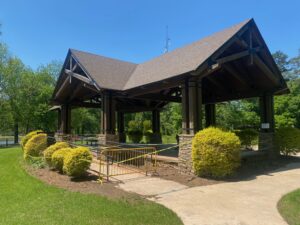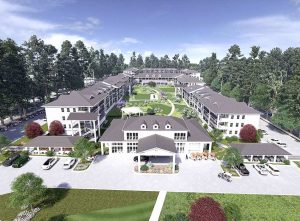When it comes to Peachtree City’s cart path system, 93 miles isn’t enough.
Also in the “not enough” category is funding for new cart paths. Nonetheless, at the request of City Councilman Eric Imker, city staff recently conducted an intensive review of potential new cart paths that could be built in the city.
The paths were ranked in several categories including connectivity and safety improvements, ease of construction, whether additional work such as right of way acquisition and utility relocation would be necessary and the like, city officials said.
The end result is that the city now has a priority list of which new paths should be built first. Of course, that is, once and if funding ever becomes available.
The city is also looking at needing big funding in the future for new corrugated metal path tunnels to replace the current undersized ones, noted Planner Tony Bernard.
It was noted that a recent survey on how citizens use the path system showed that 75 percent of residents used it for shopping trips, and 71 percent used it for getting to recreation areas.
Third on the list was getting to church or school at 23.3 percent, followed by medical-related trips at 17.6 percent and work at 8.4 percent.
Council members were impressed at the level of detail used to rank each potential new path.
The spreadsheets detailing the rankings for each path is posted on the city’s website, www.peachtree-city.org. To access the document, click on “City Departments” then “Planning and Zoning” then “Multi Use Path System.”
The website also includes a master path plan map and also aerial maps of potential new paths.
The highest ranked new path project overall was one that would go from Crosstown Drive southward to the new path bridge over Flat Creek at a projected cost of $230,000.
Next was the second phase of a connection between Rockaway Road and the new Somerby senior citizen’s development off Ga. Highway 74 South at a cost of $26,000. In third is a new path along Holly Grove Road from Aster Ridge Trail to Holly Springs Road at a cost of $63,000.
The path rankings were also broken down into the top and bottom three for each category. Among the more notable of these was the top-ranked safety project being the path tunnel connections under MacDuff Parkway. The city is currently negotiating with the nearby apartment complex to acquire some property to use for the eastern side of the necessary approach paths to the tunnel, which is already in place. The anticipated cost for that project is $41,000.
The second-ranked safety project is a relocation of the path serving the Kedron Village shopping center at $16,000 and in third is the first phase of a new path for Smokerise Point at $8,768.
The top-scoring new path in the connectivity category was one along Willow Road from Ga. Highway 74 to the existing path at the entrance to the Twiggs Corner condominiums.
Officials cautioned that the construction estimates were based on a per-foot calculation and did not include any land acquisition, utility relocation or any other similar work that could cause the price to climb significantly.
City Manager Bernie McMullen said the exercise of ranking potential new paths would be for naught unless the city figures out a way to fund them. That will require some work, as the city has battened down its budgetary hatches over the past several years to weather the economic storm, slashing departmental budgets and delaying projects in hopes of better times ahead.
McMullen asked council to consider that perhaps residents would be willing to dedicate a portion of the city’s millage rate to expanding the paths based on the priority listing.
Councilwoman Kim Learnard said she typically hears two types of comments about the city’s path responsibilities from residents. One questions why the city would spend money to build new paths when it can’t maintain the paths it has, and the other questions why the city can spend money on cart path maintenance when everyone else in the city is connected by a path except that particular resident’s neighborhood, she said.
Councilman Eric Imker noted that a quarter mill property tax increase would raise about a half-million dollars a year toward the initiative. Imker agreed with McMullen that the city didn’t need to spend any more time on the path rankings “unless we actually fund some of these projects.”
This year City Council voted 3-2 to increase the millage rate by 1.25 mills, with Imker, Learnard and Councilwoman Vanessa Fleisch in favor an Councilman Doug Sturbaum joining Mayor Don Haddix with a no vote.
McMullen said the effort to individually rank each potential new path, which required a site visit for each proposal, was “a tremendous effort.”










Leave a Comment
You must be logged in to post a comment.